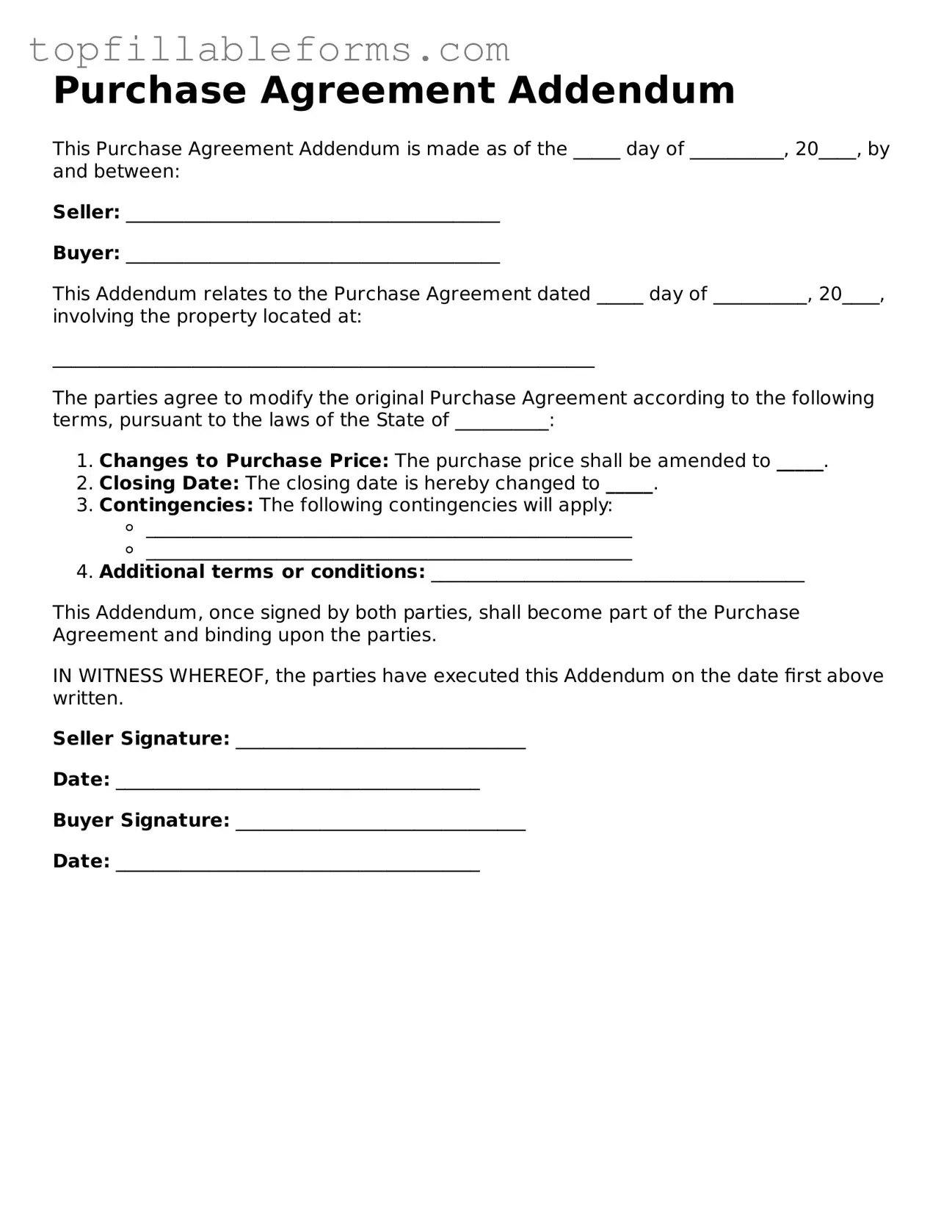Purchase Agreement Addendum
This Purchase Agreement Addendum is made as of the _____ day of __________, 20____, by and between:
Seller: ________________________________________
Buyer: ________________________________________
This Addendum relates to the Purchase Agreement dated _____ day of __________, 20____, involving the property located at:
__________________________________________________________
The parties agree to modify the original Purchase Agreement according to the following terms, pursuant to the laws of the State of __________:
- Changes to Purchase Price: The purchase price shall be amended to _____.
- Closing Date: The closing date is hereby changed to _____.
- Contingencies: The following contingencies will apply:
- ____________________________________________________
- ____________________________________________________
- Additional terms or conditions: ________________________________________
This Addendum, once signed by both parties, shall become part of the Purchase Agreement and binding upon the parties.
IN WITNESS WHEREOF, the parties have executed this Addendum on the date first above written.
Seller Signature: _______________________________
Date: _______________________________________
Buyer Signature: _______________________________
Date: _______________________________________
